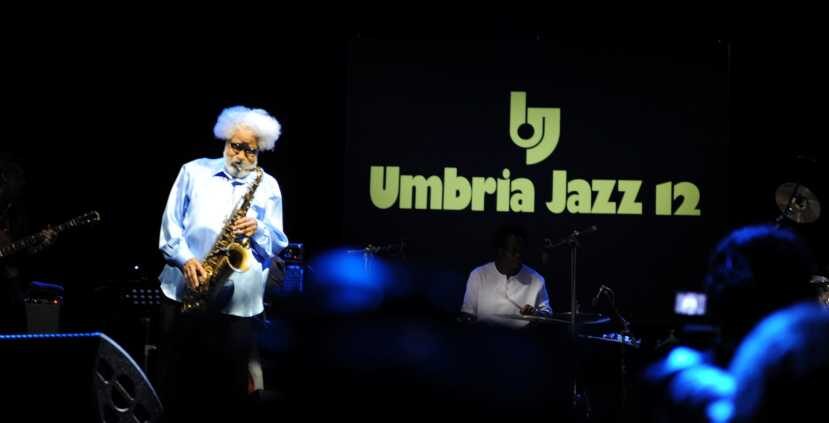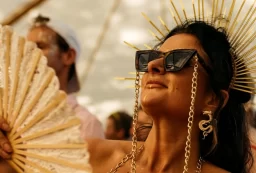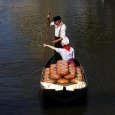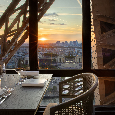
Once a year, this scene for the jazz lover repeats itself. A band, armed with trombones, trumpets, and saxophones, marches through the cobbled streets of an otherwise sleepy medieval Italian town. They pause and blare out New Orleans jazz at a thousand-year-old piazza. Moments later a solo sax improvisation ensues and with it, the crowd claps and stomps to the music to the point of hysteria. It’s one in the morning, and the fun is just beginning. Every summer Perugia provides this kind of party. It is Umbria Jazz, an international festival with a roster of world-class artists and a celebration of jazz like no other.

Perugia is a small ancient town surrounded by Etruscan, Roman, and medieval walls. It is the capital of the Umbria region in central Italy. Top acts in jazz and contemporary music along with emerging talents have been coming to perform there for the last half-century. The Umbria Jazz Festival lasts ten days in the middle of July and attracts thousands of visitors from around the world. The festival unites different music tastes and styles in various open-air and indoor venues from art galleries and gardens to gothic palazzos.

“I would stop friends on the street, ask them for a 1000 lire and say: from now on you are a member of the Hot Club Perugia,” recalls Carlo Pagnotta, founder and longtime artistic director of the Umbria Jazz festival.
Pagnotta, Perugia native and jazz aficionado, had since his youth pursued a dream of gathering the genre’s best artists to celebrate both the city’s historical heritage and the miracle of music. And he did succeed. In 1955, Louis Armstrong performed in the 18th-century Teatro Morlacchi. Trumpeter Chet Baker who is known as the “Prince of cool jazz,” played in 1956 at the medieval Sala dei Notari as part of the Hot Club Perugia programme. After its official launch in the summer of 1973, the Umbria Jazz Festival quickly exploded onto the international jazz scene. Young crowds from across Italy and beyond flocked to Perugia eager to see the street performances all of which were free of charge at the time.
In 1982 Umbria Jazz evolved into its current format with a combination of paid and free events in multiple Perugia locations. Over the years such greats played at Umbria Jazz as B.B. King, Dizzy Gillespie, Miles Davis, Quincy Jones, Tony Bennett, Lady Gaga, Simply Red, Caetano Veloso, Gilberto Gil, Eric Clapton, Santana, Sarah Vaughan, R.E.M., Massive Attack, Prince, Liza Minnelli, Elton John and many other monumental artists of various genres.
"The legendary songwriter and Nobel Prize recipient, Bob Dylan was chosen to open the 50th Umbria Jazz Festival."
Celebrating its 45th anniversary in 2018, the Umbria Jazz Festival presented more than 500 artists in 250 concerts, attracting an international audience of over 450,000. The legendary songwriter and Nobel Prize recipient, Bob Dylan with his album “Rough and Rowdy Ways” was recently chosen to open the 50th Umbria Jazz Festival. Critics have labeled this record as one of Dylan’s strongest creations ever, the one where he explores the “terrain nobody else has reached before,” according to the Rolling Stone review. Other headliners included such prominent musicians as Kyle Eastwood, Branford Marsalis, Ben Harper, Marc Ribot, Joe Bonamassa, Miguel Zenón, and Paolo Conte among others.

The festival’s main concerts take place at Perugia’s Arena Santa Giuliana. Thousands of fans gather in the shadow of the convent that lends its name to the stadium. But Umbria Jazz is even more well-known for the quantity and quality of its free events. Some of the most spectacular gigs happen in the Giardini Carducci overlooking Umbria’s expansive plains, at the Piazza IV November next to the magnificently restored Fontana Maggiore, in the gothic Palazzo del Priori, at Teatro Morlacchi where Louis Armstrong had once performed, and various other stages.

Multiple wine bars and smaller clubs cached into the 13th-century buildings also host performances. These sometimes impromptu shows often go on until the small hours in the morning. The Teatro Pavone, an 18th-century replica of the Fenice Opera House in Venice, and the elegant historical Hotel Brufani are famous for hosting all-night-long jam sessions where musicians come to play after their gigs.

Umbria Jazz Festival offers not only immersion into the world of music. It’s also a chance to experience traditional Umbrian cuisine and taste great vines along with more intimate jazz sessions. Bottega Del Vino, one of Perugia’s renowned wine bars, offers live concerts as well as a solid selection of local wines and an authentic menu of typical Umbrian plates of pasta and salads made from freshly sourced produce. At the jazz brunches and dinners in La Taverna restaurant guests savour antipasti of cured meats from the village of Norcia, homemade pappardelle with pork ragu, and black truffle ravioli while listening to live saxophone.
"It is said that out of all the country’s regions, it’s Umbria that Italians tend to keep to themselves the most."
As the medieval Perugia streets tend to get very crowded during the Festival, taking some time out for half-day or more could be a desirable escape from the heat and the buzz. There are many enchanting – and still untouched by mass tourism – villages within an hour’s drive from Perugia: Norcia, Gubbio, Montone, and Todi to name a few. These fantastically preserved ancient settlements are dotted along the verdant hills and surrounded by olive groves, vineyards, and 500-year-old farmhouses.

A nearby Lake Trasimeno offers multiple trekking and biking routes through its lush woods or around the lake perimeter. Tiny medieval villages along the lake include Castiglione del Lago, the seat of the battle in which Hannibal defeated the Romans with his elephants 2000 years ago. Nearby settlements Passignano sul Trasimeno or Tuoro sul Trasimeno are also worth a visit and a leisurely lunch in one of the small family-owned trattorias. Time permitting, a ferry ride to Isola Maggiore, an island in the middle of the lake would make a pleasurable excursion as well. The island is home to a centuries-old abbey, a partially ruined fortress, and a weathered wooden statue of Francis of Assisi who had once purportedly visited and blessed the place.

Wine lovers will enjoy a trip to Montefalco. This postcard-worthy village stands on a hill carpeted with olive trees and grape vines. Rosso, Grechetto, and Sagratino wines known for their ruby colour and tannic, tongue-tingling flavour are produced here. Those keen on Renaissance art will lose track of time in Spello, a town of Roman origin just outside Perugia. The local churches of Santa Maria Maggiore and Sant’Andrea boast the masterpieces by Perugino and Pinturicchio.

It is said that out of all the country’s regions, it’s Umbria that Italians tend to keep to themselves the most. It remains relatively undiscovered despite its rich nature and vast artistic heritage. But during the Jazz festival, this region becomes cosmopolitan and vibrant. And it’s a great reason to book a visit to Perugia and its surroundings into the summer calendar. Umbria Jazz is a dream getaway for the sophisticated travelers wanting it all: unforgettable cultural and gastronomic experiences in a unique historical setting.















